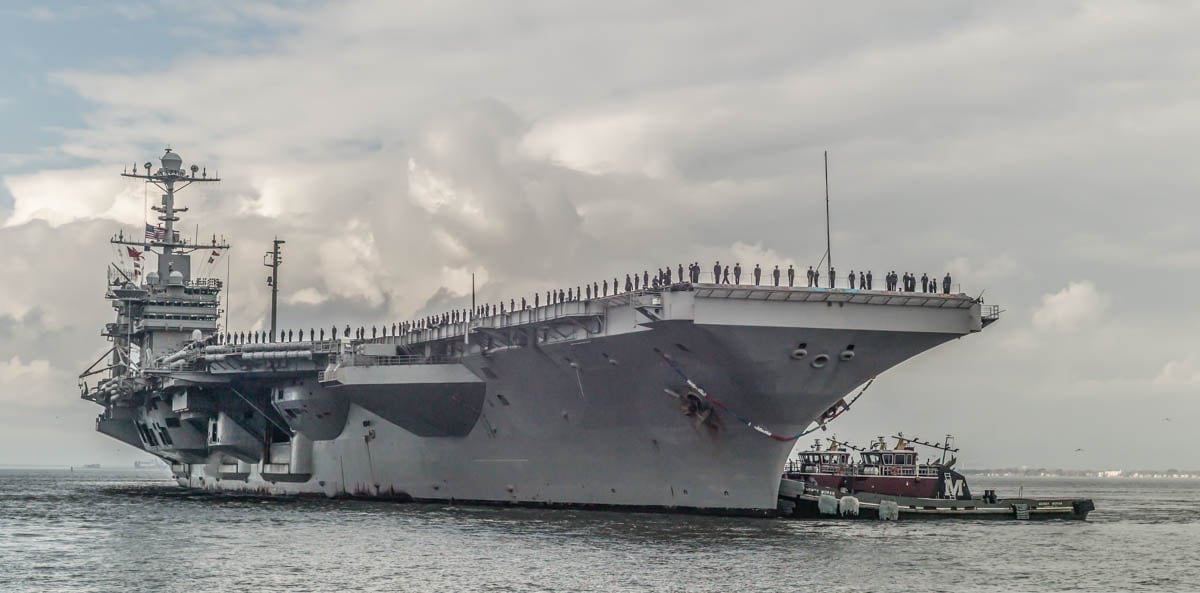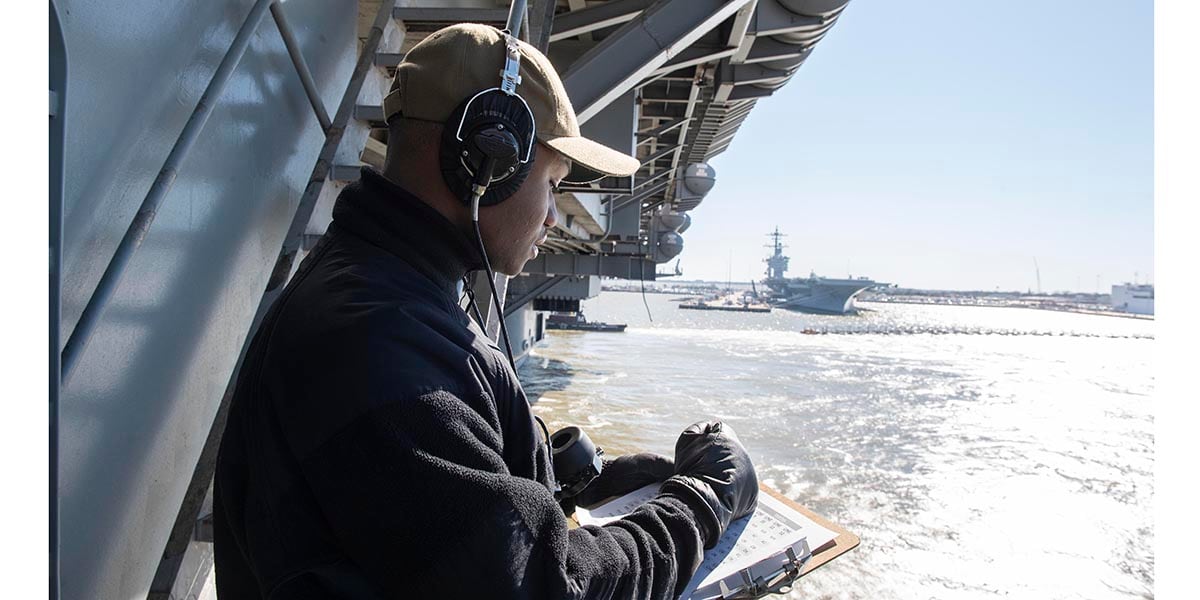NORFOLK, Va. — It’s rare to watch two flattops leave Naval Station Norfolk within hours of each other, unless there’s a hurricane approaching.
But on Thursday the first out of the blocks was the aircraft carrier Harry S. Truman, which returned to sea for the second time in two weeks.
The crew is going out on a sustainment exercise designed to keep the warship and personnel prepared to depart quickly as the East Coast’s “surge” carrier, officials said.
But the nation’s second-oldest carrier, Dwight D. Eisenhower, also got underway on its own power after nearly 19 months of repairs.
“A disciplined and thoughtful approach to the basics brought us here,” said Capt. Kyle Higgins, Ike’s commanding officer, in a March 29 statement.
“We’ve been training for this for quite some time and invested a tremendous amount of sweat along the way."
RELATED

Eisenhower’s recent return to Naval Station Norfolk made room in the yard for sister Nimitz-class carrier George H.W. Bush to enter its maintenance phase.
The Ike’s crew had been training pierside on damage control, firefighting and other skills before heading to sea.
Their drills now can continue during sea trials off the coast of Virginia, according to Carrier Strike Group 10 spokesman Lt. Cmdr. Rick Chernitzer.
The trials are designed to make sure everything was fixed during the long maintenance session and works the way it’s supposed to operate. The crew is expected to conduct small-boat operations, execute high-speed turns and test catapults and the warship’s countermeasure wash-down systems — the onboard fire suppression equipment.
Once the checklist is finished, Eisenhower will officially exit its maintenance phase and enter the basic training portion of the Optimized Fleet Response Plan to prep for an overseas deployment.
As for the very busy Truman, this SUSTAINEX will include the guided-missile cruisers Normandy and Vella Gulf, plus the destroyers Ramage, Lassen, Forrest Sherman and Farragut.
“This sustainment exercise will provide a realistic and challenging at-sea opportunity to refresh our skills, apply what we learned on deployment and ensure our teams are integrated and ready to take on any mission we may be tasked with,” said Carrier Strike Group 8 commander Rear Adm. Gene Black in the statement released Thursday.
The carrier Harry S. Truman returned here on Dec. 16 following an eight-month deployment that showcased the Pentagon’s Dynamic Force Employment plan.
Crafted to keep potential enemies guessing when and where a warship might show up, the Truman left here on April 11, just 21 months after returning home from the Middle East.
The Truman and three of its guided-missile escorts returned to Virginia on July 21 for what officials cautioned families was an “extended port visit,” not a homecoming, and then put back to sea on Aug. 28 to participate in NATO’s massive Trident Juncture exercises in the Norwegian Sea.
The sacrifices of the crew didn’t go unnoticed. Truman is the East Coast’s Aircraft Carrier Battle Effectiveness Award winner for 2018.

The trip out to the SUSTAINEX marks the second underway for the Truman this month. On March 16, it headed to sea alone for a week of training.
Because portions of the carrier’s post-deployment crew is turning over, the upcoming exercise will help integrate sailors who recently reported to the warship, plus test how well the strike group still operates as a team, according to Cmdr. Dan Walker, the flattop’s strike operations officer.
“It’s important because it allows for a full integration into hands-on training," he said in the prepared statement. "We can’t assume all the people that are here now were here on our last deployment.”
Nine fixed-wing and helicopter squadrons are expected to participate in the upcoming exercise, performing carrier qualifications and cyclic flight operations, too.
A third carrier, Abraham Lincoln, is slated to depart here on April 1 for a globetrotting tour that culminates in a homeport shift to California’s Naval Air Station North Island.
Mark D. Faram is a former reporter for Navy Times. He was a senior writer covering personnel, cultural and historical issues. A nine-year active duty Navy veteran, Faram served from 1978 to 1987 as a Navy Diver and photographer.









